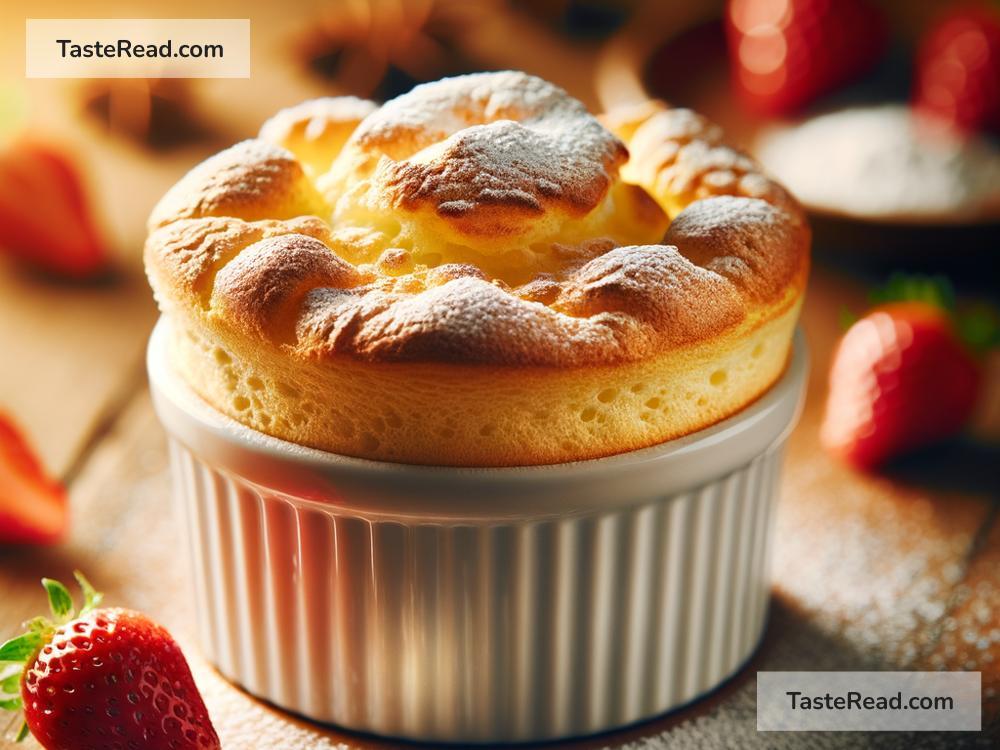The Story of the French Soufflé: A Fluffy Wonder
When you think of elegant French food, one dish stands out: the soufflé. Light, airy, and delicate, the soufflé isn’t just food—it’s an art form. With its golden, puffed-up top, it’s a favorite in fancy restaurants and home kitchens alike. But how did this magical dish come to be? Let’s take a journey into the story behind the French soufflé.
What is a Soufflé?
To start, let’s break it down. The word “soufflé” comes from the French verb souffler, which means “to breathe” or “to blow.” This makes sense because a soufflé is light and fluffy, almost like it’s filled with air. It’s made from two main parts: a base and whipped egg whites. The base gives it flavor—this could be cheese, chocolate, fruit, or other tasty ingredients. The whipped egg whites are what give it its famous puffy texture. When baked, the air trapped in the egg whites expands, lifting the soufflé and creating its stunning height.
Soufflés can be sweet or savory, depending on the ingredients. Sweet ones are ideal for dessert, with flavors like chocolate, lemon, or vanilla. Savory ones might include cheese, spinach, or even seafood, making them perfect for a starter or main course.
The History of the Soufflé
The soufflé has a rich history that dates back to 18th-century France. The man often credited as its creator is Marie-Antoine Carême, a famous French chef and cookbook author. Carême was one of the first chefs to elevate cooking into a fine art. Soufflés already existed in a simpler form before Carême, but he refined the technique and introduced them to the world as we know them today.
Carême worked for royalty and wealthy families, cooking elaborate meals that showcased France’s culinary skills. He loved precision and presentation, which explains his fascination with the soufflé. Its dramatic rise and delicate appearance made it the perfect dish to impress his aristocratic clients. Over time, the soufflé became a symbol of French sophistication.
The Science Behind the Soufflé
Making a soufflé might seem magical, but it’s really all about science. The key is in the whipped egg whites. When you beat egg whites, you’re creating tiny bubbles of air surrounded by proteins. Heat makes the air expand, and the proteins set, holding the soufflé in place. This is why it appears to “rise” in the oven—it’s much like a balloon inflating!
However, this scientific process also means soufflés can be tricky to make. If the egg whites aren’t beaten properly or the oven temperature isn’t precise, the soufflé might not rise or could even collapse. That’s why people sometimes call making a soufflé the ultimate cooking challenge!
Fun Fact: Why Do Soufflés Fall?
If you’ve ever made a soufflé, you’ve probably heard the warning: don’t open the oven door while it’s baking! A soufflé needs a steady temperature to stay puffed. The slightest disruption—like cooler air entering the oven—can cause it to deflate. And once it’s out of the oven, it will eventually fall because the air bubbles inside shrink as they cool. While a fallen soufflé might not look as impressive, it still tastes delicious!
Modern Soufflés: A Timeless Classic
Even though the soufflé became popular centuries ago, it’s still loved today. Chefs experiment with new flavors and presentations, keeping this classic dish exciting and fresh. For example, you might see soufflés flavored with exotic spices, topped with unique garnishes, or served in creative individual ramekins.
Home cooks also enjoy making soufflés—thanks to online tutorials and cookbooks, the dish is no longer reserved for professional chefs. While it still carries a reputation for being tricky, many people find joy in the challenge of creating something so beautiful and delicious.
How to Make a Soufflé at Home
Want to try making a soufflé yourself? Here’s the basic idea:
-
Prepare the base: Combine flavorful ingredients like cheese or melted chocolate with egg yolks.
-
Beat the egg whites: Whip egg whites until they form stiff peaks. A pinch of cream of tartar can help stabilize them.
-
Combine carefully: Gently fold the whipped egg whites into the base mixture so you don’t deflate the air bubbles.
-
Bake: Pour the batter into a buttered ramekin and bake at the right temperature. Avoid opening the oven door while it bakes!
-
Serve immediately: A soufflé is best enjoyed fresh out of the oven while it’s still tall and fluffy.
Soufflé Around the World
While the soufflé is a French invention, its popularity has spread worldwide. Countries have adapted the recipe to include local flavors and ingredients. For example, in Japan, soufflé pancakes—extra fluffy and thick—are a fun twist on the traditional dish. In the U.S., chocolate soufflés are a popular dessert, often served with a scoop of ice cream.
The soufflé is proof that food is both universal and personal. It has the power to bring people together through creativity, science, and deliciousness.
Conclusion
The French soufflé is more than a dish; it’s a story of elegance, innovation, and the joy of cooking. From its roots in 18th-century France to modern kitchens around the globe, the soufflé continues to inspire. Whether sweet or savory, perfect or imperfect, it’s a reminder that cooking is both an art and a science. So the next time you make or eat a soufflé, take a moment to appreciate the skill, history, and love baked into that fluffy, golden masterpiece. Bon appétit!


